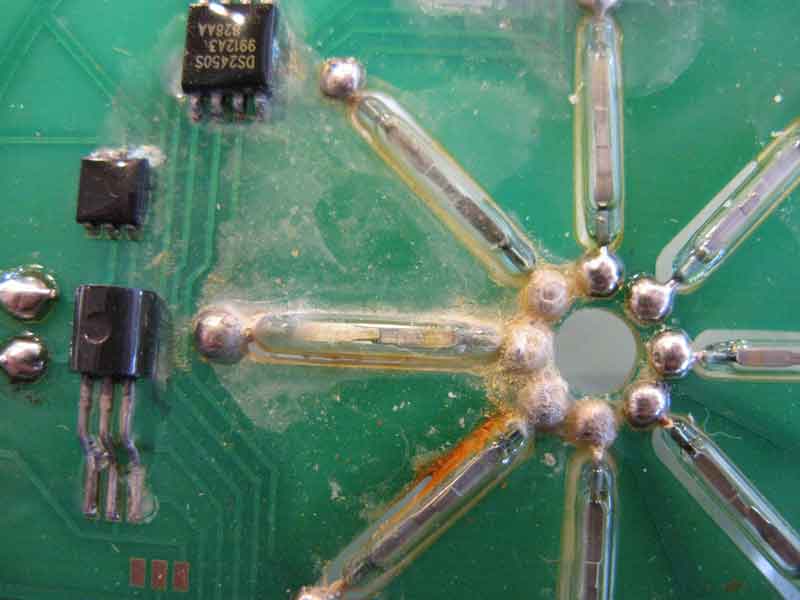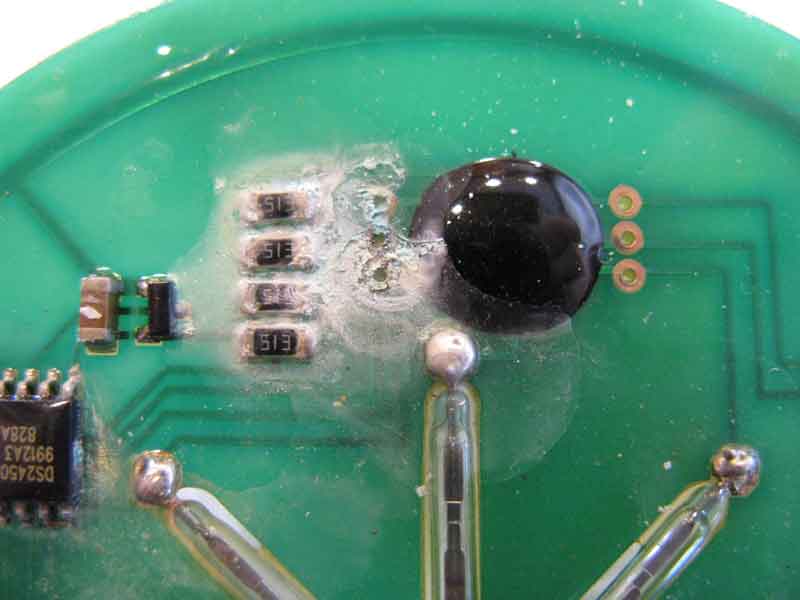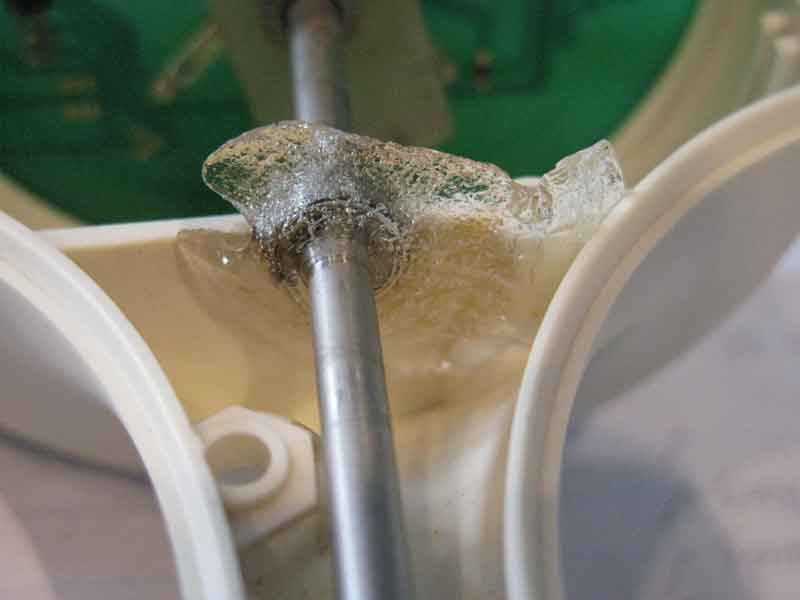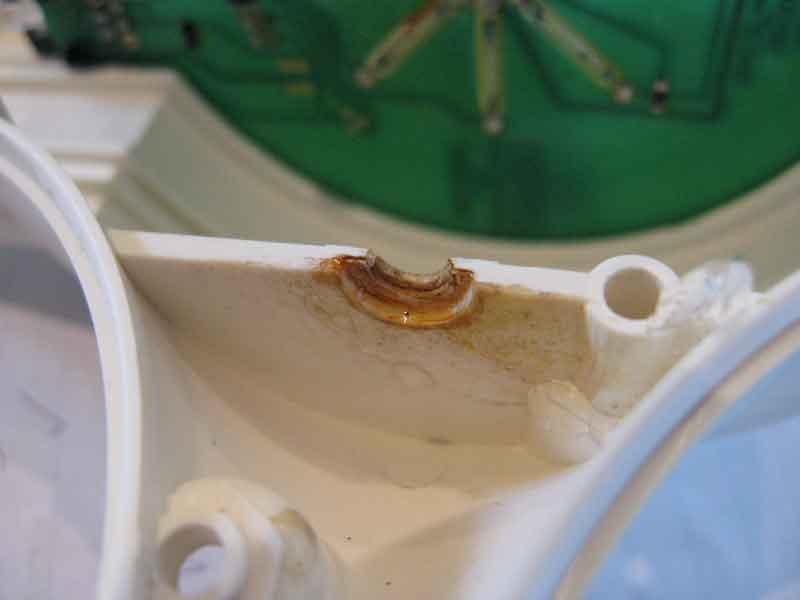- Home
- Deceptions
- Solar
- Thermal Audit
- Ventilation
- Sensors
- Governance
- Environment
- Reference
- Contact
- News
1-Wire Wind Instrument
For those of you that aren't familiar with this, 1-wire is technology from Maxim (formerly Dallas Semiconductor) that allows sensors (humidity, temperature, barometric pressure, wind speed or just about anything else you can dream up) to be connected to a computer cheaply using things like telephone wire. They don't need power supplies either, they get the little (amazing little) power they need from the computer.
How not to create a robust wind instrument (AAG 1-wire wind instrument)
Purpose:
The AAG Wind instrument is an anometer and weather vane for recording wind speed and direction. This unit was a nice proof of concept developed by Dallas/Maxim and later comercialized by AAG, but unfortunately, it really is no match for a maritime climate where you get blowing, freezing rain that gets into everything plus mild salinity. This unit was installed about 5 miles from the Atlantic ocean. Below are a series of pictures of what it looked like after 90 days of use. The manufacturer is AAG Electronica of Mexico.
This is a picture of oxidation of the circuit board. I had been sprayed with a coating that was not up to the task.

More extensive corrosion. The elongated glass tunes are reed switches that are activated with the magnets on the rotor pass over them.

One day it was making a loud noise that could be heard inside the house, so I took it inside and opened up. By the time I took this picture, most of the ice had melted. Looks like the case needs to be better sealed.

This is the position of the metal bearing that nests into the a recess in the plastic molding. The rust is from the bearing. Eventually the bearing would sieze and the shaft would turn the bearing, either slowing down the anometer cup or grinding away at the plastic housing.

Now for something more positive. It is probably fine in arid climates. There is software to read this unit from a variety of sources, including the excellent w1retap, available at Source Forge, and several programs that run under microsoft windows.
If you were to seal this unit with silicone, spray the circuit boards with a better sealant, and applied some grease to the bearings, it would probably last a few years.
Update: It died after six months (one winter season). Temperature still works, but the direction reed switches are no longer being read, nor is the wind speed working. Since I need a weather station and have limited time for making junk work, it is being replaced with a Davis Vantage Pro2 Plus. Of course, at 10 times the price, it should be in a different league.
